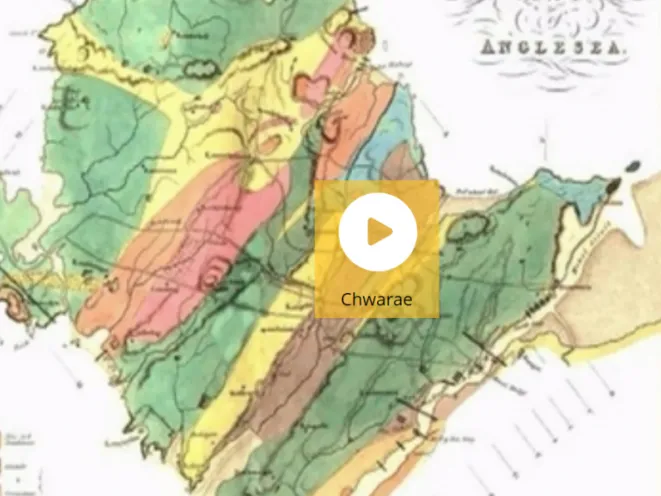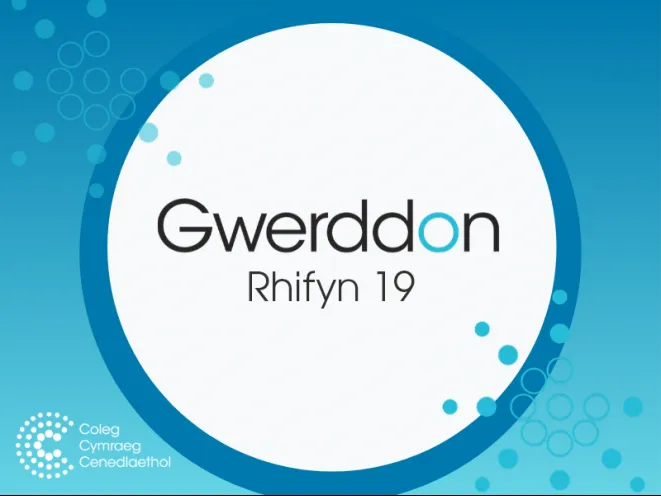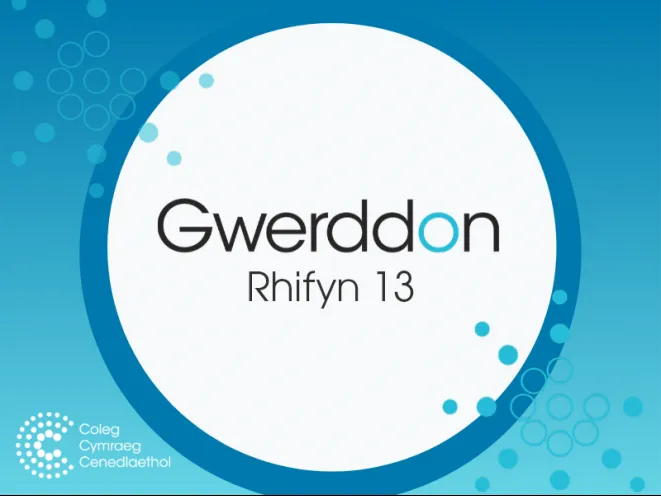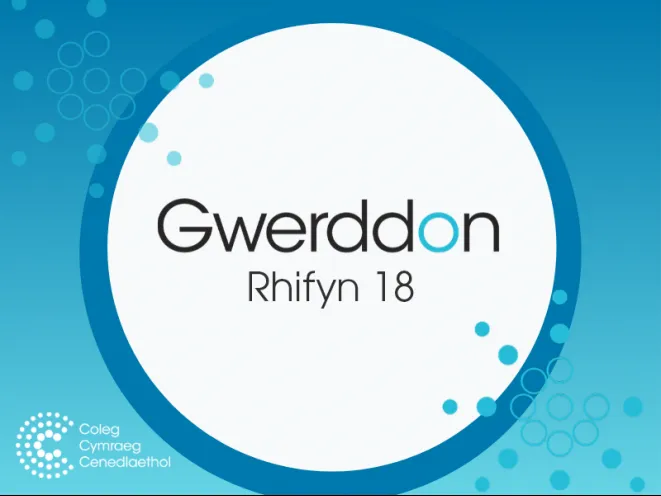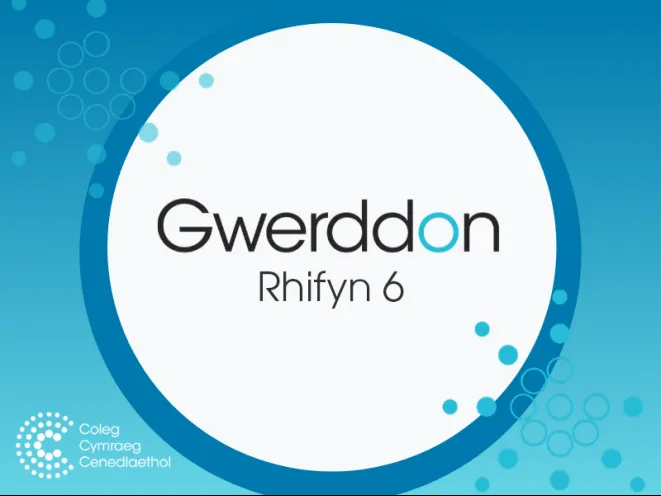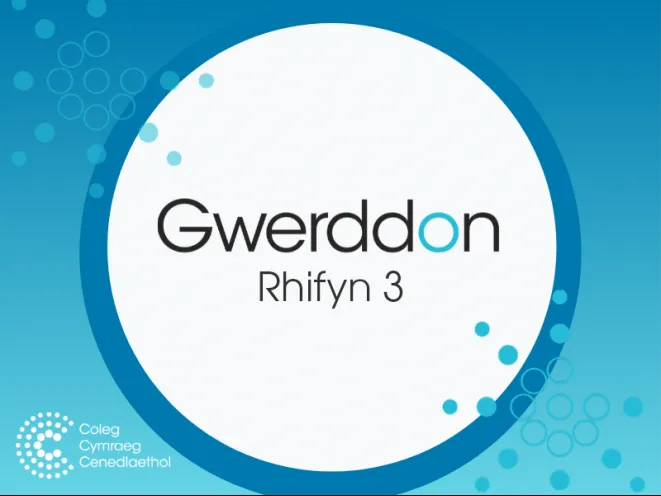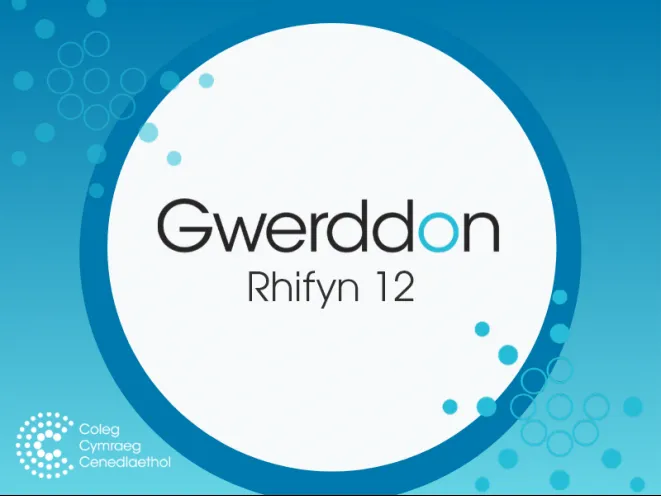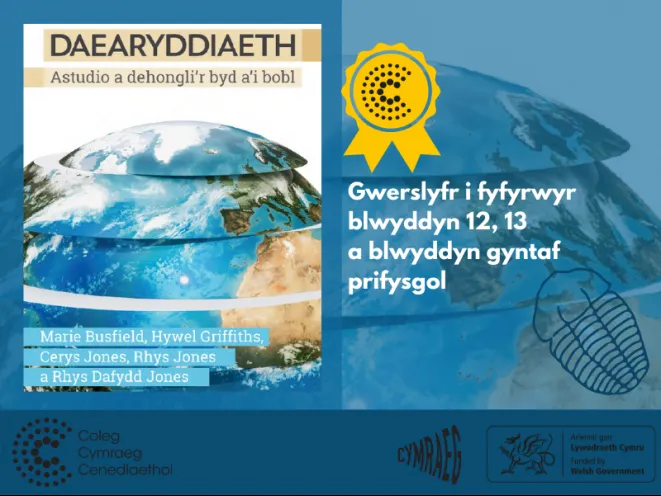Mae'r ddogfen fer hon gan Dr Hywel Griffiths yn cynnig cyflwyniad cryno i ddatblygu sgiliau trin a thrafod a chyflwyno data ystadegol o fewn Excel, ac yn addas ar gyfer myfyrwyr yn ystod tymor cyntaf eu hastudiaeth israddedig pan efallai y bydd gofyn iddynt ddefnyddio Excel am y tro cyntaf, cyn ei ddefnyddio er mwyn gwneud dadansoddiadau mwy manwl. Sgiliau TG sylfaenol yw ffocws y ddogfen felly, a'r gobaith yw y gall fod yn sail ar gyfer tasg fer mewn seminar neu diwtorial. Ar ddiwedd y ddogfen, nodir rhai cwestiynau a phwyntiau trafod y gellir ymhelaethu arnyn nhw yn y sesiynau hyn. Cliciwch ar 'Cyfryngau Cysylltiedig' i lawrlwytho'r data . Mae gallu trin data ystadegol yn sgil greiddiol o fewn y gwyddorau amgylcheddol, boed hynny ym maes daearyddiaeth ffisegol, daearyddiaeth dynol neu wyddor amgylcheddol. Defnyddir ystod o ddulliau casglu, cyflwyno a dadansoddi data ystadegol mewn ymchwil academaidd a gan gyrff ac asiantaethau sydd yn rheoli'r amgylchedd yng Nghymru. Mae sawl meddalwedd ar gael er mwyn trin a thrafod data, ac mae rhai yn fwy defnyddiol ar gyfer gwahanol bwrpasau (arddangos, dadansoddi ac ati). Un o'r rhai mwyaf cyffredin yw MS Excel.
Trin data gyda MS Excel
Tirwedd Symudol
Darlith ar dirwedd symudol Ynys Môn a draddodwyd gan Dr Dei Huws, Ysgol Eigioneg Prifysgol Bangor, i Gymdeithas Wyddonol Gwynedd ym mis Rhagfyr 2017. Gellir gwylio'r ddarlith ar Panopto drwy
Muslims in Rural Wales: disconnection, faith and belonging
In recent years, considerable attention has been given to the experiences of minority groups which are marginalised within a rural context. However, little attention has been paid to religious minorities in rural regions. This scarcity of attention is surprising considering the attention paid to religion in issues of multiculturalism and inclusive citizenship. This paper discusses the experiences of one particular religious group, Muslims, in rural west Wales. The article concentrates on experiences of absence from the landscape (i.e. the physical landscape and the broader images and values that convey ideas about places), which can create difficulties in fostering a sense of community. It also looks at local Muslims’ construction of the landscape in moral and Christian terms. The paper suggests that these experiences transcend ideas of ‘exclusion/belonging’, and attest to a complex relationship between local Muslims and this rural region.
The importance of chemical fingerprinting for Icelandic volcanic ash: The Grákolla tephra, Torfajökull volcano
Tephrochronology studies in the North Atlantic typically focus on large scale silicic volcanic eruptions such as the Askja 1875, Hekla 1104 and Öræfajokull 1362. However, smaller-scale Icelandic eruptions are becoming more important as regional time marker horizons and have the potential for application across widerdistances e.g. the Eyjafjallajökull eruption of 2010. The Grákolla tephra is one such layer, sourced within the Torfajökull volcanic system. On the basis of major element chemistry, the tephra layer exhibits an identical geochemical fingerprint to the Landnám tephra, which is also sourced from the Torfajökull system. However, distinct differences are discernible on the basis of trace element chemistry, although some data overlap remains. This realisation highlights the potential for introducing significant age discrepancies to a dating framework based on recent silicic Torfajökull tephra deposits in the Faroe Islands if tephra identification is based solely on major element chemistry. Six hundred years separate the eruptions, which although a relatively short time frame for geological events, represents a significant time frame for the dating of human events.
The legacy of coal mining in the south Wales coalfield: water contamination and remedial options
Historic coal mining and the associated processes have had a detrimental effect on the natural environment in the south Wales coalfield as contaminated mine drainage from abandoned mines discharges into the local hydrological system. The legacy of coal mining includes the discharge of contaminated mine drainage from several abandoned mines and the formation of insoluble iron minerals. This article discusses the underground processes that lead to the formation of contaminated water and iron minerals. Four abandoned coal mines located in the western part of the coal field and the remediation systems operational at these sites were investigated. Contaminated mine waters at these sites are being remediated through the removal of iron so that the final concentrations are in line with those recommended by the Water Framework Directive.
Historical climate: The potential of Wales’s documentary sources
With the uncertainty of climate change, reconstructions from parameteorological and phenological records provide a strong basis for the analysis of past and present climate. However, very little research has been completed on the historical climate of Wales, which is variable throughout the country due to factors such as topography and atmospheric circulation. This is particularly so for west Wales, which has a diverse range of environments from the upland ‘green desert’ to the fertile coastal plains, where an extensive history may potentially be reconstructed from un-tapped documentary resources. The potential is immense as possible sources of meteorological information include all religious, official and personal documentation, which may provide an insight into the relationship between the Welsh and the weather.
The geomorphology of Wales’s rivers: Today, yesterday and tomorrow
This paper presents a review of the fluvial geomorphology research undertaken on Wales’ rivers. As well as discussing trends seen in these studies, by firstly focussing on the work of geologists of the late nineteenth century, and by progressing through the development of geomorphology as a research field to the present interdisciplinary period, the fields that have received particular attention on Welsh rivers are discussed. These include the evolution of the mega-geomorphology of Wales, innovative process studies, the evolution of alluvial fluvial systems to short- and long-term climatic changes, and the response of Welsh rivers to anthropogenic activity. This range of studies is a result of the nature of Welsh fluvial systems. Firstly, they display an evolutionary history including glacial periods and rejuvenation. Secondly, contemporary processes have created a wide range of channel types, including bedrock channels, gravel bed rivers, meandering, braided, stable and unstable channels. Thirdly, academic interest and pragmatic concerns regarding river management have led to a large body of work that has, in some cases, led to many reaches on Welsh rivers being classed as international archetypes. Gaps in our knowledge are also discussed. These include the need to increase our understanding of contemporary process and to continue the work done on alluvial response and evolution through using the latest techniques to constrain the chronology of fluvial system development. There is a need to extend the spatial scope of our studies to areas which have not received as much attention in the past such as the bedrock and mixed bedrock-alluvial channels of the north-west and the south Wales valleys.
Predicting contributions by the last glaciers of Eryri (Snowdonia) to Younger Dryas carbon cycling
The concept of glaciers as active ecosystems is strongly supported by evidence of significant contributions to global carbon and macronutrient cycles by extant glaciers. Regrettably, the roles of glacial ecosystems in past glaciations are generally overlooked. Therefore we reconstructed glacial habitats and carbon fluxes on the last glaciers of north Wales at their maximum extent during the Younger Dryas chronozone glaciation. Net uptake of 30-180 kg C of CO2 and emissions of 265-1591 g C CH4 per annum are estimated for the palaeoglaciers. This emphasises the hitherto unexplored potential for the last Welsh glaciers as actors in biogeochemical cycles; however our understanding could be extended by linking our knowledge of contemporary glacial ecosystems with analyses of sedimentary biomarkers and thermomechanical models of Devensian ice mass dynamics.
Litter on rural Welsh roads: A case study from Penisa’r Waun
701 pieces of litter were collected per kilometre from a small rural road in Gwynedd. The minimum annual ‘hidden’ cost of this litter – uncollected by the local authority – was £11.81 per kilometre. The comparable annual cost of such litter on small rural roads throughout Wales is £230,000. A substantial proportion of these costs could be eliminated through introducing a deposit system for cans and bottles. 13 specific companies were responsible for producing more than one quarter of all the litter collected. The Welsh Government could arrange an annual mitigation payment of £58,000 from them in order to defray the hidden costs of litter associated with their activities.
Cynhadledd Wyddonol 2019
Cynhaliwyd Cynhadledd Wyddonol 2019 yng Nghanolfan Medrus, Prifysgol Aberystwyth, ar 6 Mehefin 2019. Roedd y gynhadledd yn gyfle i gyflwyno'r ymchwil gwyddonol ddiweddaraf trwy gyfrwng y Gymraeg. Yma ceir casgliad o gyflwyniadau a fideos o'r gynhadledd.
Môr yr Iwerydd a Thywydd Cymru ('The Atlantic Ocean and the Weather of Wales')
A video showing how water circulation in the north of the Atlantic Ocean affects the weather in Wales. The video was scripted and is presented by Jess Mead Silvester (a PhD student in Ocean Physics at the time).
Daearyddiaeth - Astudio a Dehongli'r Byd a'i Bobl ('Geography - Studying and Interpreting the World and its Pe...
This exciting and comprehensive book covers a wide range of themes studied in Geography, including human, physical and environmental processes. It is suitable for A level students, as well as students studying Geography at University. Winner of the Welsh-medium resource award in the Coleg Cymraeg's annual Associate Lecturers Awards.


